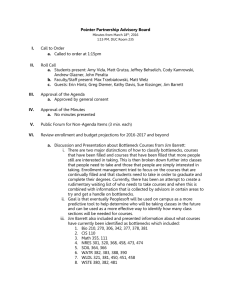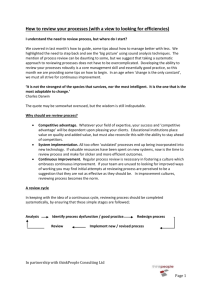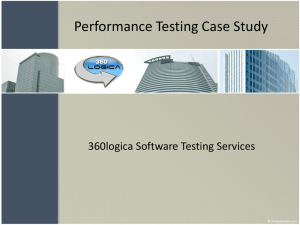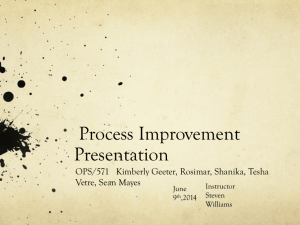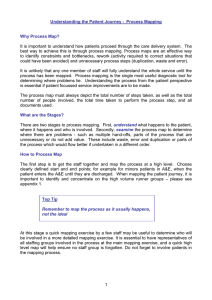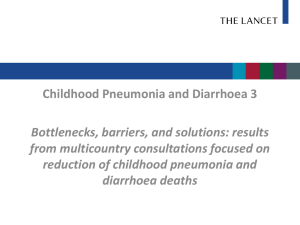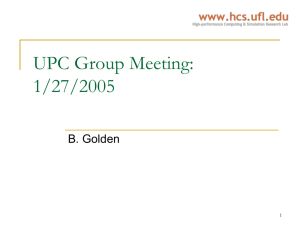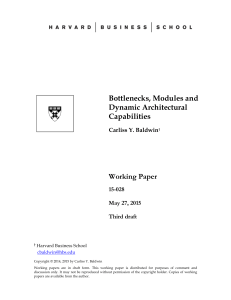Bottleneck Analysis - District Health Performance Improvement
advertisement
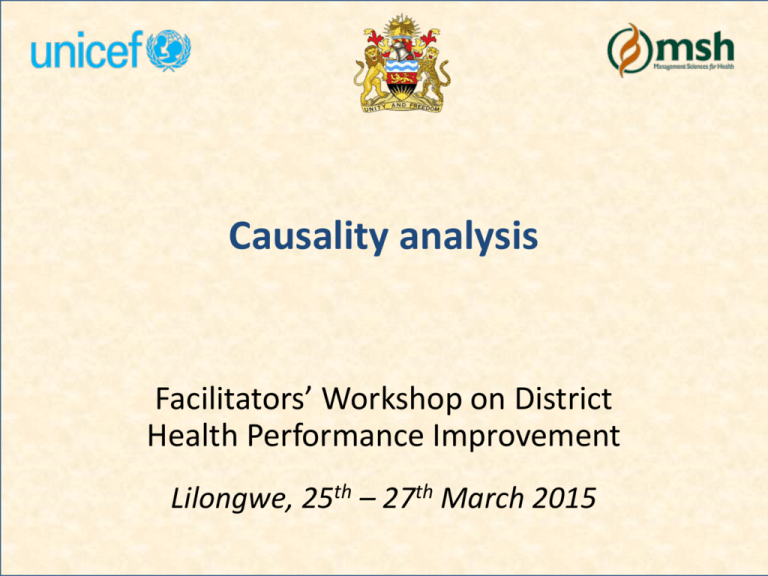
Causality analysis Facilitators’ Workshop on District Health Performance Improvement Lilongwe, 25th – 27th March 2015 Diagnose • Select interventions • Define indicators • Identify information sources and collect data • Identify the bottlenecks • Identify areas lagging behind • Analyse the root causes of bottlenecks Steps Intervene • Prioritize solutions with all stakeholders • Define an implementation and monitoring plan • Support implementation Verify • Monitor frequently using existing opportunities Adjust • Take corrective actions to ensure impact Analyse the root causes of bottlenecks and barriers • The quality of the analysis depends on this very step • It is important to have around the table people with the right knowledge and expertise Who should be around the table? The quality of the causality analysis is a critical determinant of the quality of the resulting plans and the impact on health system performance Once the bottleneck is identified, its causes need to be assessed thoroughly Determinants from supply 100 90 80 70 60 50 40 30 20 10 0 Why? Determinants from demand Determinants from quality 1 Why? 2 commodities human resources georgarphic initial access utilization continuous utilization effective coverage / quality Aim • To find the real cause which ignited the chain of events leading to the under-performance: – There is a cause-effect relationship to be explored during the process of causality analysis – Often do we stop at symptoms without getting to the root cause (s) of the problem An illustration of Benjamin Franklin on the cause-effect relationship • A kingdom was lost for a want of a battle. • A battle was lost for a want of an army • An army was lost for a want of a rider • A rider was lost for a want of a horse • A horse was lost for a want of a shoe • A shoe was lost for a want of a nail And all for the loss of a horseshoe nail. Adapted from Benjamin Franklin’s poem 6e President of the USA, 1785 – 1788 A simple technique of 5 why • A Japanese technique developed by Sakichi Toyoda and used till today as the scientific basis to Toyota Automobile’s approach . • A question asking technique used to explore the cause-andeffect relationships underlying a particular problem. • Allows a deep analysis, moving progressively from the effect observed to the underlying cause • Avoid the temptation of a quick and superficial analysis limited to the common symptom, instead of the root causes of observed problems Explore root causes of key bottlenecks 100% 80% 60% 40% 20% 0% • Legislative/ Policy* Environment • Budget & Expenditure • Management/ Coordination • Social Norms ? ? ? ? ? ? ? ? We may find issues in the enabling environment causing such bottlenecks 100% 80% 60% 40% 20% 0% • Legislative/ Policy* Environment X • Budget & Expenditure • Management/ Coordination • Social Norms X X Few useful rules • Always cut your orange until the last piece before jumping onto the apple • Never stop the analysis to something which stills looks like a symptom, and not a cause • Always ensure that all possible causes have been looked into as one problem might have more than one cause • The number 5 is just a guide, not a law Limitations • More useful for supply and quality related bottlenecks and less useful for determinants needing the beneficiaries’ perspectives (we use FGDs for that) • Requires a multi-disciplinary team with the required expertise in the various bottlenecks to be analyzed: Stakeholder participation bring additional technical and financial resources to the districts • There is need for technical assistance initially to ensure good quality of the analysis to improve the skills and build confidence Know what to look for when facilitating a Causal Analysis • Common causes of bottlenecks in the health system (specific for each determinant) • Main environmental factors (Social Norms, Legislation/ Policy, Budget/ expenditure, Management/ Coordination) • Possible crisis/hazards (if relevant)
